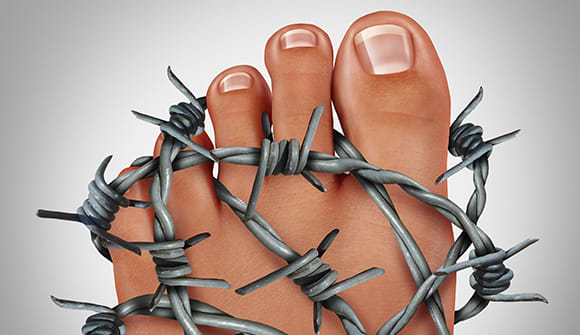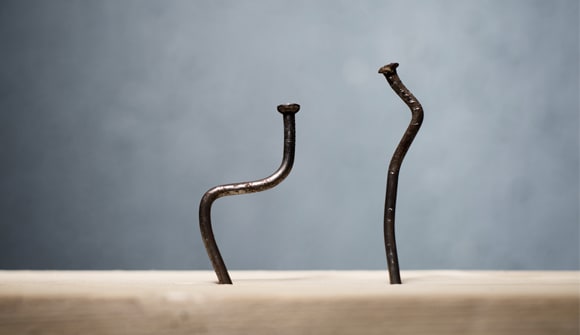Caitlin Whyte: If you've ever had back pain, you are not alone. Back problems are one of the most common reasons people see a doctor. And as you get older, back pain becomes even more common. While back pain can limit certain everyday activities, symptoms that progressively worse than over time or when the pain is associated with numbness or shoots down into the extremities, individuals should seek professional help.
Dr. James Perry, an orthopedic spine and trauma surgeon with Jacksonville Orthopedic Institute is here to speak with us about common back injuries and how they happen, what to be on the lookout for when you tweak your back and how to treat back injuries from mild to severe.
This is Baptist Health Radio. As the most preferred healthcare provider in Northeast Florida, we are here to help you stay informed with the latest news, views and resources for your health and wellbeing. So to begin our episode here, doctor, what are the most common types of back injuries that you see with patients coming into your office?
James Perry, DO: Well, I think by far the most common injuries are, the muscles, tendons, and ligaments, those are your sprains and strains, of course, in the spine. as a spine specialist, I'll see the disk injuries as well. whether it be a small tear, a bulge or a rupture of the disk and, then, of course, fractures about the spine as well.
Caitlin Whyte: And then what causes patients to have back pain in the first place and how can they prevent it from getting worse?
James Perry, DO: So back pain comes kind of in two major flavors. So, the injuries that happen acutely, so if somebody, fallen down the stairs or, , going over their handlebars on their bike, lifting things, those are more of your acute injuries. And then of course, you have your wear and tear injuries that, maybe have multiple influences on that end between, your occupation, recreation, diet and exercise habits and things like that.
So, generally, what you want to do to keep them from getting worse is, for starters, listen to your body. you're in pain there for a reason. So you want to make the adjustments as necessary. don't do the things that caused the pain to increase. And that may include resting, activity modifications, putting some ice on it, especially in the early terms. , generally the first three weeks after an injury, ice is best. But in more of the chronic situation, if this is maybe an arthritic issue that's flared up, staying proactive with a home exercise program, stretching and strengthening, good lifting habits, good ergonomics, whether it be, you know, at home or at work. And then, with a weekend warrior approach that a lot of folks have, just trying to stay in shape really to help manage and help avoid these types of injuries.
Caitlin Whyte: You know, stress is a factor in all of our lives these days. How does stress factor into back pain and what can we do about it?
James Perry, DO: So stress, obviously is not good for many things in life. Certainly as it relates to the back, you can have increased tension in the muscles, which can predispose you to either, some wear and tear type of problems or just that tension long-term because the back is such an important part of our system to mobilize. Whether it be with recreation or occupational activities, that underlying tension can affect us.
So generally, really good life habits, equate to good back habits. So getting enough rest, getting enough sleep, get diet, drinking enough water. Obviously, the stretching and strengthening for the core is the foundation on that approach. And then other things, , meditation, good life stress management activities certainly can all reduce these things.
Caitlin Whyte: And when it comes to back pain, there are so many treatment options. how do I know which treatment option is right for me and my pain?
James Perry, DO: Well, generally, I guess it really depends on what you're dealing with. So the acute setting, if you've just hurt yourself as we previously discussed, cue in to the pain. Avoid the things that cause the pain, but the approach in the acute settings is generally ice, anti-inflammatories getting in and seeing a chiropractor or a licensed physical therapist. They can do an evaluation and start their treatment for you. A lot of times, those will start generalized. And as you respond to treatments and your feedback, you know, I always tell patients to communicate very clearly with your providers, because they're going to know what's working better and that it'll really become customized with that feedback. This exercise or this treatment's not working, while this one is. We're going to go that direction."
And then of course, with our occupation, like ergonomics, a lot of folks sit a lot of the day, so you can have a sit-stand desk. You can have lumbar support on your chair. You can do stretching activities even at work. If you have a standing job, get inserts for your shoes or get an anti-fatigue pad, again stretching activities, taking breaks between, rounds of work, whatever that may look like. Just trying to manage things because when it comes to it, a lot of these acute injuries we can effectively treat with these conservative treatments. The more chronic issues may have a degenerative underlying driver to them, and as such, just trying to manage it. Whether it be arthritis of your hip, knee, or back, it's a similar approach to all these things for management.
Caitlin Whyte: With back pain being so broad and kind of common, I mean, what are some warning signs to be on the lookout for when you tweak your back? What means it's a little worse than the average?
James Perry, DO: So part of it is, one, the severity and the direction it's going. So, your common sprains and strains, they're going to settle down in a couple of weeks, So you just take it easy, take some Advil, Tylenol, local modalities. Things that last more than a couple of weeks, those are reasons to maybe get in and get seen or progressive pain. Pain is getting progressively worse, severe pain that's really limiting activities. People develop pain radiating into their legs that we call radiculopathy or sciatica. So pain, numbness, tingling, and certainly weakness. You know, if weakness develops. That's generally a sign that somebody needs to get seen by a spine specialist, because that's quite a bit of irritation to lead to problems like that.
Caitlin Whyte: So if surgery is then recommended, what are some of the risks and the benefit?
James Perry, DO: Well, certainly, we generally will start with conservative non-operative care. And then once we've exhausted that, there's the injections that play a role as a middle ground as well. But whenever it does come to surgery, generally the benefits are to reduce pain and increase function. And of course on the backend, we have the healing and the rehabilitation that are very important steps. Those are active steps for the patients to go through. And as long as everything goes well, then generally we can reach those goals of decreased pain, increased function.
Caitlin Whyte: And wrapping up here, doctor with advancements in technology coming so far, can you tell us about some of those newer robotics surgical options that are available?
James Perry, DO: Yeah. So that's one of the beauties about spine surgery is, over the past 20 to 30 years, minimally invasive spine surgery has really started to take off. Our understanding of the anatomy, our techniques, our tools, everything has advanced significantly, and it's so much better than it was previous.
So, minimally invasive spine surgery, that allows us to accomplish our goals with smaller incisions, less blood loss, generally less pain and quicker recovery for the patient. And these days, we have the robotic guidance as well. So that's one of the more recent advancements where the robot is really a tool. It helps us with accurate placement of the implant. So during the surgeries where we're doing implants, it helps us accurately place those very, very precise type of placement and that plays in very nicely with minimally invasive procedures. So the smaller incisions, less blood loss, quicker recovery and, of course, a very nice safety margin to do so as well.
Caitlin Whyte: Beautiful. Well, doctor, is there anything else we didn't touch on that you want listeners to know?
James Perry, DO: Yeah. I think one of the big things is, there's a lot of folks out there that they really wait a long time and they let their problem get advanced to the point where either they can't take the discomfort anymore or, you know, in those settings where weaknesses really set in, they've let it last too long. So there's a lot of fear and anxieties and really just trepidation when it comes to folks getting treatment.
The treatment of any problem these days, medicine has come a long ways in a lot of areas, but that's very true about the spine. So there are safe and effective ways to treat these problems. And for folks that are really suffering or that have had some extended problems, they don't really need to wait. They should really get in and see a spine specialist and at least get the workup and know what the problem is and get some feedback on what treatments are available, so at least they know, and they can be informed to make good decisions to try to get better.
Caitlin Whyte: Absolutely. Well, Dr. Perry, thank you so much for joining us today. If you're experiencing acute or chronic back pain that interferes with your daily life, make an appointment with a Baptist primary care physician near you today. Your doctor can connect you with the specialists you may need such as Baptist rehabilitation or other orthopedic and rehabilitation specialists at Jacksonville Orthopedic Institute. To learn more, please call 904-202-4YOU. That's 904-202, the number 4, Y-O-U. And thank you for listening. This has been Baptist Health Radio. I'm Caitlin Whyte. Stay well.



